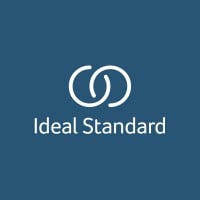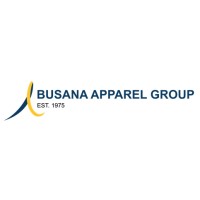Company Cyber Security Posture
NANA
NA Company Details
NA
NA
NA
NA
NA
NA
Scan still pending
NA
NA
Between 200 and 800
This score is AI-generated and less favored by cyber insurers, who prefer the TPRM score.
 NA Global Score
NA Global Score.png)

Company Scoring based on AI Models
| Model Name | Date | Description | Current Score Difference | Score |
|---|---|---|---|---|
| AVERAGE-Industry | 03-12-2025 | This score represents the average cybersecurity rating of companies already scanned within the same industry. It provides a benchmark to compare an individual company's security posture against its industry peers. | N/A | Between 200 and 800 |
Company Cyber Security News & History
| Entity | Type | Severity | Impact | Seen | Url ID | Details | View |
|---|
Company Subsidiaries

NA
Access Data Using Our API

Get company history
.png)
NA Cyber Security News
ADB, Meghna Group of Industries Sign $20 Million Deal to Enhance Food Security and Energy Efficiency in Bangladesh
ADB, Meghna Group of Industries Sign $20 Million Deal to Enhance Food Security and Energy Efficiency in Bangladesh. This new facility will ...
Videonectics provides IVMS, IVA and ANPR systems to enhance security at Meghna Group of Industries
Established in 1976, Meghna Group of Industries (MGI) is a conglomerate in Bangladesh. MGI operates out of a large campus in Dhaka that houses its head ...
MGI's E-Zones power 50,000 jobs, Tk 36,000cr in output -
"We're not just building factories. We're building the future of Bangladesh's economy. We build with quiet action, not noise", Mostafa Kamal ...
MGI distributes Fresh Anonna sanitary napkins -
'Fresh Anonna' sanitary napkins were distributed to the students of Hazaribag Girls' High School and College for free on Thursday.
BBF names Mostafa Kamal as Iconic Business Leader -
Mr. Mostafa Kamal is the first business personality to be honored as the 'Iconic Business Leader', for his contribution in establishing ...
MGI introduces Fresh Anonna Sanitary Napkin -
For the first time in Bangladesh, Fresh Anonna Sanitary Napkin is providing double protection of ADL and Air laid paper to ensure comfort during ...

NA Similar Companies

RAK Ceramics
RAK Ceramics is one of the largest ceramics’ brands in the world. Specialising in ceramic and gres porcelain wall and floor tiles, tableware, sanitaryware and faucets, the Company has the capacity to produce 118 million square meters of tiles, 5.7 million pieces of sanitaryware, 36 million pieces of

Indomarco Adi Prima
Indomarco Adi Prima (IAP) is a fully subsidiary of Indofood that operating as strategic business unit in distribution. We have the most extensive distribution network in Indonesia, reach out to almost every remote spot in the country. Since 2005, our stock point quantity has been growing significant

Ideal Standard International NV
Ideal Standard International is a world leading manufacturer of high-quality residential, commercial and healthcare bathroom solutions. Headquartered in Brussels, Belgium, the privately-owned company employs over 8,000 people, operating at 9 manufacturing sites and serving over 100 countries acros

Arçelik Türkiye
Arçelik Türkiye olarak, "Dünyaya Saygılı Dünyada Saygın" misyonuyla yola çıkıyoruz ve teknoloji, insan kaynağı ve üretim gücümüzü sürdürülebilir bir gelecek için kullanıyoruz. 1955 yılında başlayan yolculuğumuz bugün, 22 marka, 46 üretim tesisi, 55.000 çalışan ve 58 ülkedeki 125 iştirak ile global

Busana Apparel Group
We are one of the largest export-oriented Apparel companies in Indonesia. We provide integrated services and solutions to pre-eminent customers in the US, Western Europe and other sophisticated global markets. Please visit www.busanagroup.com for further information. History Started with a small fa

Patanjali Ayurved Limited
Patanjali Ayurved Limited was established in 2006 with a thought of rural and urban development. The company is not merely an organization but a thought of creating a healthy society through Yog and Ayurved. We value our consumers and we believe by providing quality products a quality life for them

Frequently Asked Questions
Explore insights on cybersecurity incidents, risk posture, and Rankiteo's assessments.
NA CyberSecurity History Information
How many cyber incidents has NA faced?
Total Incidents: According to Rankiteo, NA has faced 0 incidents in the past.
What types of cybersecurity incidents have occurred at NA?
Incident Types: The types of cybersecurity incidents that have occurred include .
Additional Questions
What Do We Measure?
















Every week, Rankiteo analyzes billions of signals to give organizations a sharper, faster view of emerging risks. With deeper, more actionable intelligence at their fingertips, security teams can outpace threat actors, respond instantly to Zero-Day attacks, and dramatically shrink their risk exposure window.
These are some of the factors we use to calculate the overall score:
Identify exposed access points, detect misconfigured SSL certificates, and uncover vulnerabilities across the network infrastructure.
Gain visibility into the software components used within an organization to detect vulnerabilities, manage risk, and ensure supply chain security.
Monitor and manage all IT assets and their configurations to ensure accurate, real-time visibility across the company's technology environment.
Leverage real-time insights on active threats, malware campaigns, and emerging vulnerabilities to proactively defend against evolving cyberattacks.




